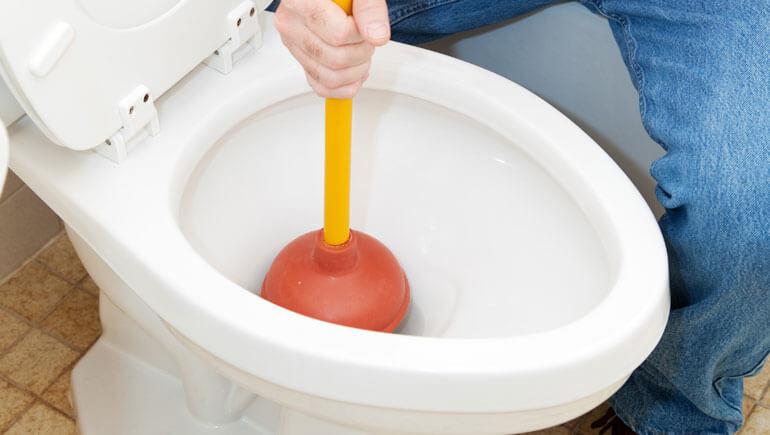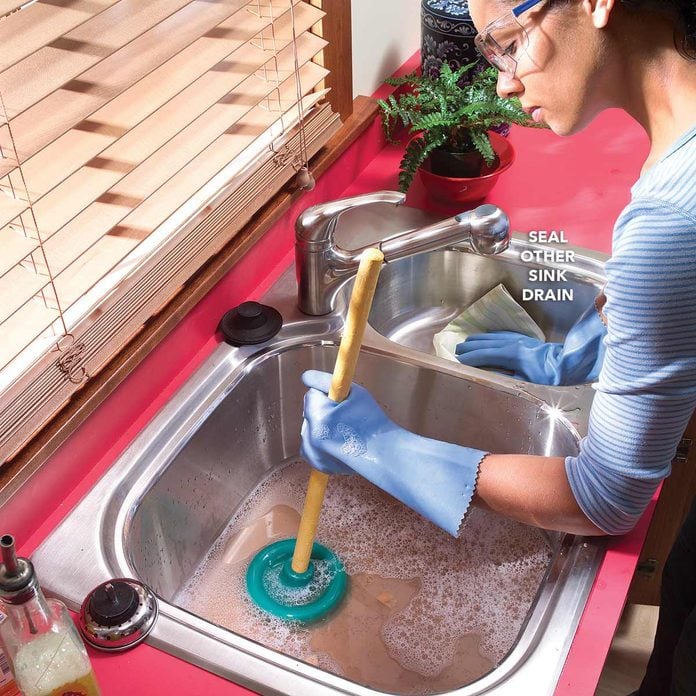Tips to Effectively Apply Plunger and Drain Cleaners: Professional Tips
Tips to Effectively Apply Plunger and Drain Cleaners: Professional Tips
Blog Article
We've stumbled on this post about How to Use a Plunger to Unclog a Toilet or Drain below on the web and decided it made good sense to talk about it with you on this site.

Intro
Proper maintenance of household drains is vital for preventing obstructions and guaranteeing smooth water flow. One of the secret devices in every home owner's toolkit is the bettor, along with numerous drain cleaners developed to deal with persistent blockages properly. This post checks out exactly how to utilize bettors and drainpipe cleansers properly to maintain your drains pipes streaming freely.
Section 1: Comprehending Plungers
Types of Plungers
There are a number of kinds of plungers readily available, each made for various types of drains pipes and blocks. The most usual types include mug plungers, flange bettors, and accordion plungers.
How Plungers Job
Bettors work with the concept of developing stress and suction to remove obstructions. When appropriately applied over a drain, they create a vacuum that can pull out debris or break up blockages.
Choosing the Right Plunger
Selecting the right bettor depends upon the kind of drain and the nature of the obstruction. Mug bettors are ideal for sinks and bathtubs, while flange bettors are better fit for commodes because of their design.
Usual Blunders with Bettors
Avoiding these blunders makes sure effective plunging: improper seal around the drain, inadequate force, and not clearing surrounding debris.
Section 2: Making Use Of Plungers Effectively
Prep work
Prior to diving, make sure the plunger covers the drain entirely and creates a limited seal. Clear any type of visible particles around the drainpipe opening.
Technique
Beginning with mild plunging motions to construct suction. Increase stress slowly, using a constant rhythm. Repeat as needed until the drainpipe removes.
Fixing Tips
If diving doesn't work, attempt adjusting the seal, using petroleum jelly for a far better seal, or making use of a different type of plunger.
Area 3: Comprehending Drainpipe Cleaners
Kinds Of Drainpipe Cleaners
Drain cleaners can be chemical or enzymatic. Chemical cleaners use solid chemicals to liquify clogs, while enzymatic cleaners utilize all-natural enzymes to break down raw material.
Just How Drainpipe Cleaners Work
Chemical cleaners react with clogs to dissolve them, while enzymatic cleaners break down organic products like hair and grease without harming pipes.
Safety Considerations
Always wear gloves and eye security when making use of chemical drainpipe cleaners. Make sure sufficient ventilation and comply with producer instructions carefully.
Eco-Friendly Alternatives
Consider making use of vinegar and baking soda or enzyme-based cleansers for green alternatives that are much safer for pipes and the environment.
Area 4: Utilizing Drain Cleansers Successfully
Application Strategies
Put chemical cleansers straight right into the drainpipe opening. Permit them to work for the recommended time prior to flushing with warm water. Chemical cleansers need to sit overnight.
Preventative measures
Avoid blending different types of cleansers, as this can generate harmful fumes. Never utilize chemical cleaners in conjunction with a plunger, as spilling can happen.
Handling Persistent Blockages
For consistent clogs, think about using a plumbing snake or calling a specialist plumbing to avoid damages to pipelines.
Final thought
In conclusion, recognizing just how to use bettors and drainpipe cleansers efficiently is necessary for preserving healthy and balanced pipes systems. By picking the right devices and strategies, home owners can tackle minor clogs and avoid major pipes problems down the line.
How To Properly Use A Plumbing Snake To Clear Drains
When any drain clogs in our home arise, we tend to gravitate toward the plunger and little else. In cases where the plunger and its vacuum-created pressure are not able to clear clogs, many immediately move to harmful chemicals or simply call their plumber to fix the issue.
we’re happy to help with all drain cleaning needs and concerns. This includes informing you on a few other home remedies you may have at your disposal for minor to moderate clogs, one of which is the use of a plumbing snake. Many people have never used one of these before – let’s go over the steps to take when your drain clogs and you have a plumbing snake available.
Attempt Plunger Use
The first step here, as we noted above, should indeed be to grab your plunger when you notice a drain clog and attempt to resolve it this way. If you’re unsure how to use a particular type of plunger, our plumbers can answer any questions you have. If this doesn’t do the trick, however, you move on to the snake.
Locate And Prepare Snake
A plumbing snake is a metal or plastic device that’s generally about a quarter of an inch thick. It’s design with significant extensions, meant to reach down into your clogged drain and push the clog out. Snakes also contain drain augers that will latch onto and push stubborn blockages.
If your plunger doesn’t clear a clog, locate your snake and bring it to the drain in question. We also recommend keeping a bucket nearby to collect the clog once you pull it out, plus we’d advise wearing goggles and possibly protective gloves.
Feed Snake
Once you’re ready to go, feed the snake slowly down the drain, using the crank device it comes with to keep it moving until it finds the clog. Once this happens, much of the clog will be latched onto the coil so you can pull it out, while the rest will simply break up and flow downward.
Detach Debris
Remove the snake slowly from the drain, and once you’ve done so, pick off any debris that’s stuck to the coil. This is another area where wearing gloves is a must.
Flush Drain
Finally, take a few minutes to ensure the snake has done its job correctly. If you’ve been using it on a toilet, flush the toilet a couple times and make sure everything flows well. If you’ve used it on a different drain, flush it with some room temperature water.
https://www.mybuddytheplumber.com/blog/how-to-properly-use-a-plumbing-snake-to-clear-drains/

Application Strategies
Put chemical cleansers straight right into the drainpipe opening. Permit them to work for the recommended time prior to flushing with warm water. Chemical cleansers need to sit overnight.
Preventative measures
Avoid blending different types of cleansers, as this can generate harmful fumes. Never utilize chemical cleaners in conjunction with a plunger, as spilling can happen.
Handling Persistent Blockages
For consistent clogs, think about using a plumbing snake or calling a specialist plumbing to avoid damages to pipelines.
Final thought
In conclusion, recognizing just how to use bettors and drainpipe cleansers efficiently is necessary for preserving healthy and balanced pipes systems. By picking the right devices and strategies, home owners can tackle minor clogs and avoid major pipes problems down the line.
How To Properly Use A Plumbing Snake To Clear Drains
When any drain clogs in our home arise, we tend to gravitate toward the plunger and little else. In cases where the plunger and its vacuum-created pressure are not able to clear clogs, many immediately move to harmful chemicals or simply call their plumber to fix the issue.
we’re happy to help with all drain cleaning needs and concerns. This includes informing you on a few other home remedies you may have at your disposal for minor to moderate clogs, one of which is the use of a plumbing snake. Many people have never used one of these before – let’s go over the steps to take when your drain clogs and you have a plumbing snake available.
Attempt Plunger Use
The first step here, as we noted above, should indeed be to grab your plunger when you notice a drain clog and attempt to resolve it this way. If you’re unsure how to use a particular type of plunger, our plumbers can answer any questions you have. If this doesn’t do the trick, however, you move on to the snake.
Locate And Prepare Snake
A plumbing snake is a metal or plastic device that’s generally about a quarter of an inch thick. It’s design with significant extensions, meant to reach down into your clogged drain and push the clog out. Snakes also contain drain augers that will latch onto and push stubborn blockages.
If your plunger doesn’t clear a clog, locate your snake and bring it to the drain in question. We also recommend keeping a bucket nearby to collect the clog once you pull it out, plus we’d advise wearing goggles and possibly protective gloves.
Feed Snake
Once you’re ready to go, feed the snake slowly down the drain, using the crank device it comes with to keep it moving until it finds the clog. Once this happens, much of the clog will be latched onto the coil so you can pull it out, while the rest will simply break up and flow downward.
Detach Debris
Remove the snake slowly from the drain, and once you’ve done so, pick off any debris that’s stuck to the coil. This is another area where wearing gloves is a must.
Flush Drain
Finally, take a few minutes to ensure the snake has done its job correctly. If you’ve been using it on a toilet, flush the toilet a couple times and make sure everything flows well. If you’ve used it on a different drain, flush it with some room temperature water.
https://www.mybuddytheplumber.com/blog/how-to-properly-use-a-plumbing-snake-to-clear-drains/

We had been made aware of that editorial on A Guide to Plungers (and How to Use Them) from an associate on our other web property. Those who appreciated our article please be sure to share it. Many thanks for your time spent reading it.
Check This Out Report this page